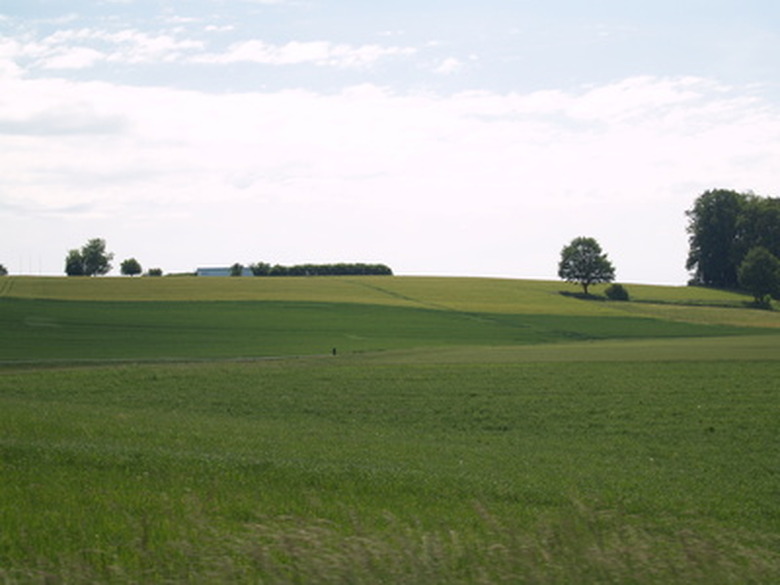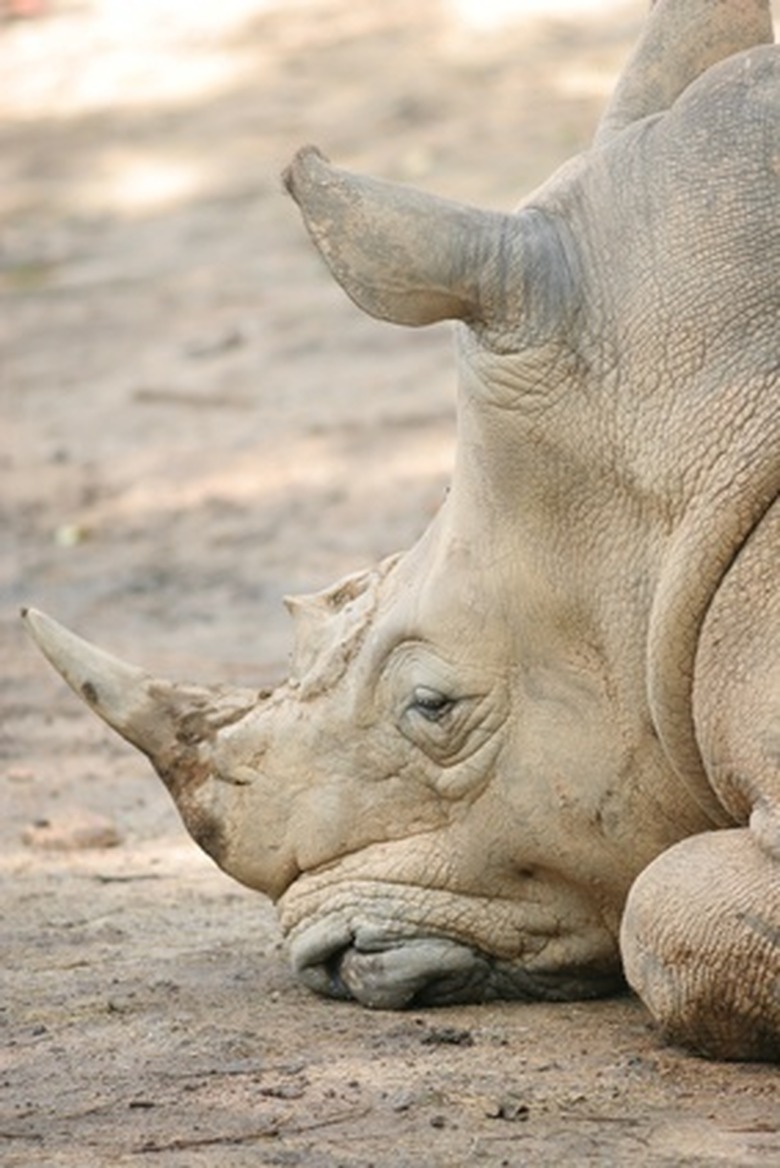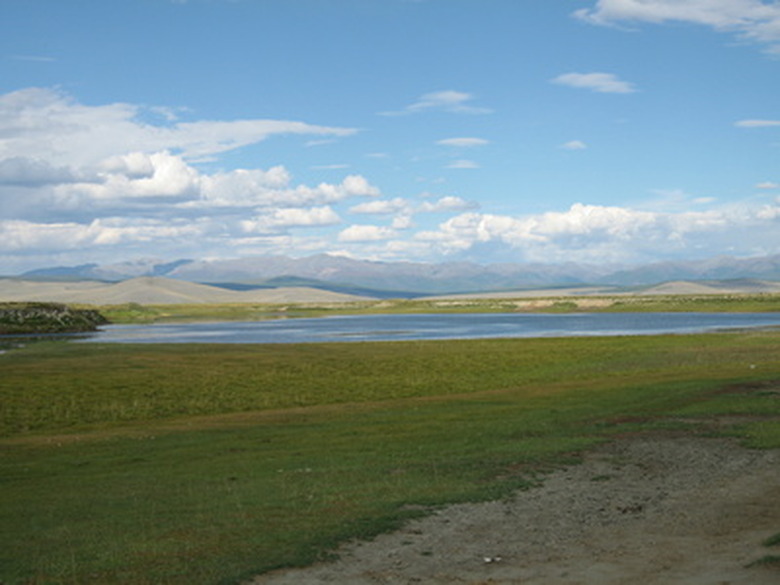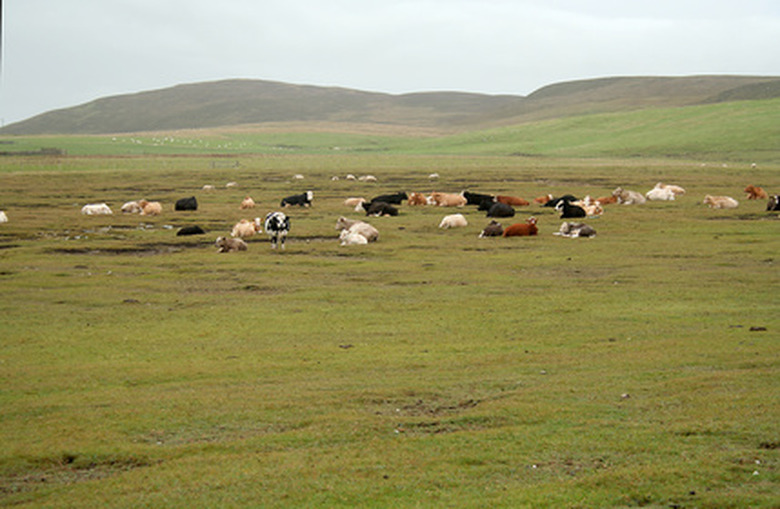Features Of Temperate Grasslands
Grasslands are defined as places where grasses predominate over trees and shrubs. There are two major kinds of grasslands in the world: savannas and temperate grasslands. Savannas are defined as places where individual shrubs and trees are scattered among the grasses. In temperate grasslands, trees and shrubs are completely absent or rare. Prairies have long grasses, and steppes have short grasses, but both are temperate grasslands. The three most prominent features of temperate grasslands are their climate, soil and flora and fauna.
Climate
Climate
As their name implies, temperate grasslands have a temperate climate with cold winters and hot summers. The temperatures can vary from a winter low of minus-40 degrees Fahrenheit in some regions to a summer high of more than 100 degrees Fahrenheit in other or even the same regions.
Rainfall has a major affect on the characteristics of the grasslands. The wetter regions produce longer grasses and are called prairies in North America, pampas in South America and the veldt in Africa. The drier regions produce shorter grasses and are called steppes.
Annual rainfall varies between 20 and 35 inches for prairies and between 10 and 20 inches for steppes. It tends to be seasonal, with most of the rainfall occurring in the spring and early summer. North America, South America and Africa have large areas of prairies, while steppes occur in North America, Europe and Asia.
Soil
Soil
The grass roots grow deep and have many branches. The decay of these roots produces a deep, dark, coherent soil rich in nutrients and with fertile upper layers. This provides nutrients to the many grasses and grassland plants that grow here.
Grassland Plants and Animals
Grassland Plants and Animals
By definition, grasses make up most of the grassland plants life in temperate grasslands. Still, there are many species of flowers that grow there. Seasonal drought, wildfires in the grass and the grazing of herds of animals hinders the growth of large trees and shrubs, but there are a few to be found there: willows, oaks, and cottonwoods grow where there is water.
A wide variety of animals makes these grasslands their homes. Animals such as prairie dogs, wild horses, bison, jack rabbits, wolves and deer are among the denizens of the American prairies along with a myriad of birds and insects. The African veldt is host to a different but just as varied group including gazelles, zebra and rhinoceroses. Steppe fauna includes rabbits, mice, antelope, badgers, foxes and many others.
Other Features
Other Features
The opportunities that these grasslands offer to farmers and particularly to ranchers have not been ignored. Most natural grasslands have been turned into farms or grazing lands. Over-grazing of grasslands can lead to soil erosion and loss of biodiversity.
Properly controlled grazing, however, might have a positive impact on the ecology of the grassland. In his 2006 paper, "Grazing Effects on Biodiversity and Ecosystem Function in California Vernal Pool Grasslands," Dr. Jaymee Marty of the Nature Conservancy showed that in some cases grazing actually increased the biodiversity of the area.
Cite This Article
MLA
Shirey, Wayne. "Features Of Temperate Grasslands" sciencing.com, https://www.sciencing.com/features-temperate-grasslands-7242982/. 22 November 2019.
APA
Shirey, Wayne. (2019, November 22). Features Of Temperate Grasslands. sciencing.com. Retrieved from https://www.sciencing.com/features-temperate-grasslands-7242982/
Chicago
Shirey, Wayne. Features Of Temperate Grasslands last modified March 24, 2022. https://www.sciencing.com/features-temperate-grasslands-7242982/



